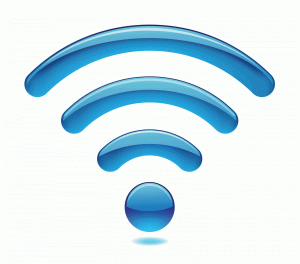If your like me you use WiFi most of the time to access Second Life on a Laptop with sometimes slower than normal speed. So you move around to get the best possible signal only to crash and end up having to connect the Ethernet cable back in to navigate through Second Life normally. Good news WiFi 6 is a coming!
|
When the first standard for wireless networking was released in 1997, it supported a maximum data speed of only 2 Mbps. Subsequent advances brought us new WiFi standards known as IEEE 802.11a, 802.11b, and 802.11g. In 2009, devices using the 802.11n standard achieved 600 Mbps. The latest standard, 802.11ac, can hit 1,200 Mbps over short distances, but in early 2019, eye-watering WiFi speeds of 4,800 Mbps will become available. Along with that blazing speed will come other changes to wireless network naming and features. Here’s what you need to know… |
What is WiFi 6 (and why is it called that)?

Instead of another unwieldy version of “IEEE 802.11whatever.” the new Wi-Fi standard will be known simply as “Wi-Fi 6,” denoting the sixth generation of wireless networking technology. Retroactively, older standards will be renamed W-Fi 5, Wi-Fi 4, and so on. New logos will make it easy to tell at a glance what standard you are buying. (Wi-Fi 6 is technically IEEE 802.11ax, if you prefer the old naming convention.)
Like earlier versions, Wi-Fi 6 will have two frequency bands available to it, starting at 2.4 and 5.0 GHz. The 2.4 GHz band will support up to 1,100 Mbps via 4 data streams. The 5.0 GHz band will support at least 4,800 Mbps via 8 data streams, enough throughput to make 8K video a reality. The Wi-Fi 6 standard is still being improved ahead of its launch next year; in lab tests it has reached up to 10,000 Mbps – 10 Gigabits of data transmitted every second! It’s safe to say we will see data speeds 4 to 10 times faster than today’s fastest.
There will be several bottlenecks that will constrain the actual throughput that you see in your home network. First, your ISP may not let you have access to gigabit-speed Internet connections, or charge too much for it.
You can still achieve top speeds between components of your home network, such as the TV monitor and a media server, but only if both ends of a connection are equipped with Wi-Fi 6 technology. Otherwise, you’ll be constrained to the fastest speed supported by the slower device.
As always, the environment in which your home wireless network operates will influence the network’s throughput. Thick walls, ceilings, and floors between nodes will degrade throughput, especially on the faster but more interference-sensitive 5.0 GHz band. Sources of radio frequency interference (RFI) such as microwave ovens, electric motors, and so on will degrade throughput. Longer distances between nodes yield slower speeds.
WiFi 6 promises greater energy efficiency, so batteries should last longer and household electricity bills may be somewhat lower. It’s hard to quantify what the energy savings will be until after the launch of WiFi 6 products next year, but I suspect the amount of electricity consumed by your WiFi router and phone charger is not a major contributor to the monthly bill.
Plane, Trains and Coffee Shops
Refinements in firmware should produce better performance in crowded environments such as coffee shops and airport lounges. It may be easier to get a strong signal; only time will tell.
And just so there’s no confusion on this point, this is for wifi networking only. The WiFi 6 standard won’t help to boost mobile data speeds on your smartphone or tablet. The mobile data network (currently known as 4G) is entirely separate from your home (or coffee shop) WiFi network, and speed depends on other factors, such as how close you are to a cell tower, the terrain, and the weather.
Top average download speeds for mobile phones range from 30 to 50 Mbps, but 5G networking is also coming in 2019. Check with your carrier to find out if it will happen any time soon in your neighborhood.
There’s not much consumers need to do right now to prepare for WiFi 6. Just be aware that it’s coming in the first half of 2019, and consider postponing any hardware upgrades until it debuts. Those would include laptops, routers, WiFi adapters, streaming devices, and anything else that connects to the Internet via wireless networking.
Have a great week from all of us on the Zi Staff

